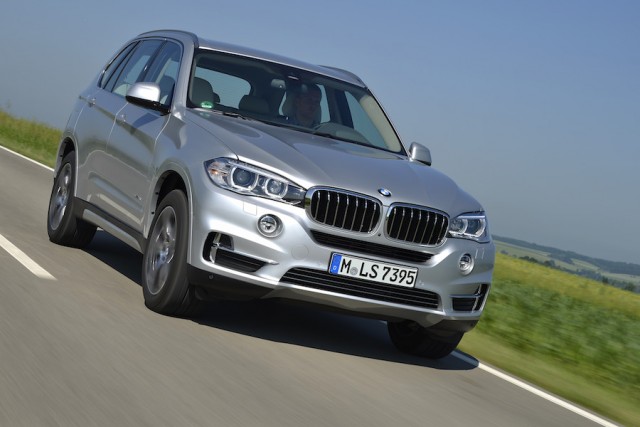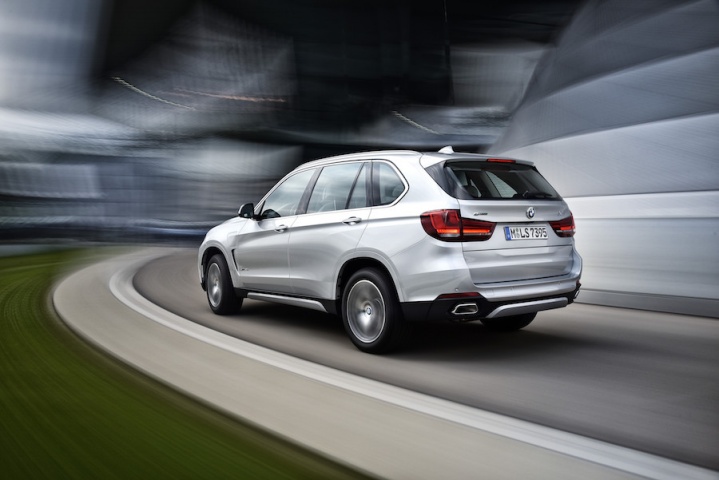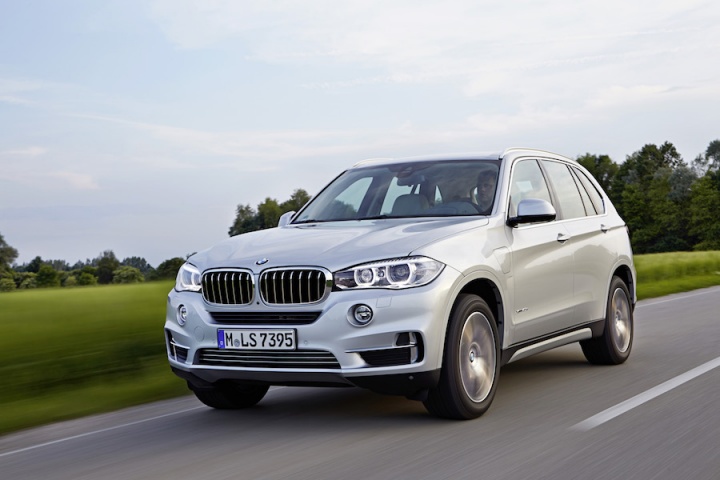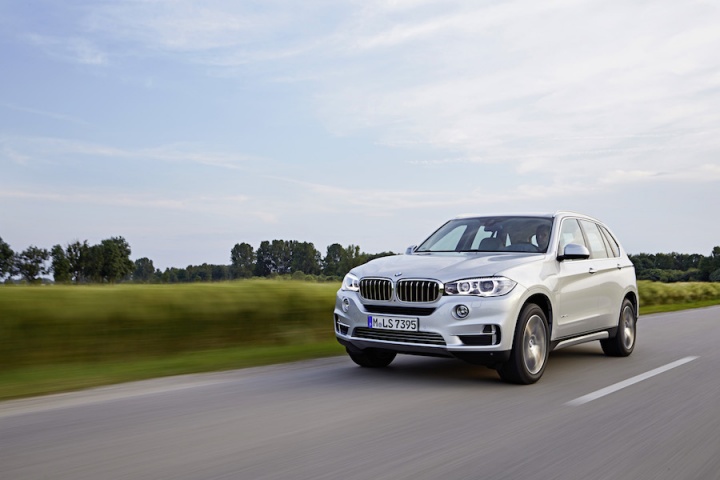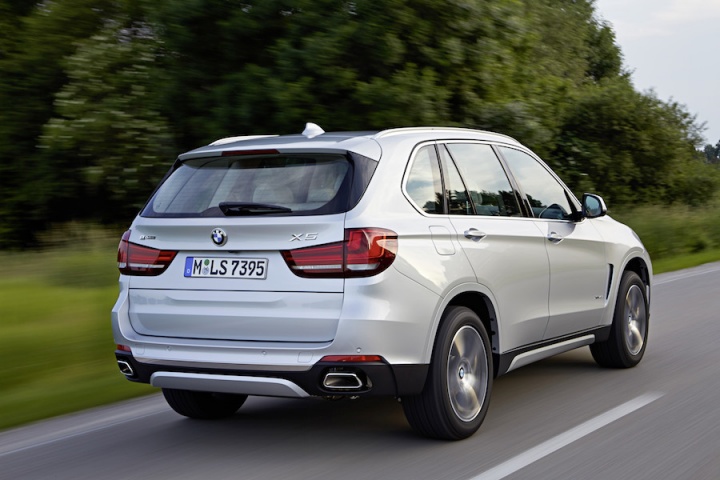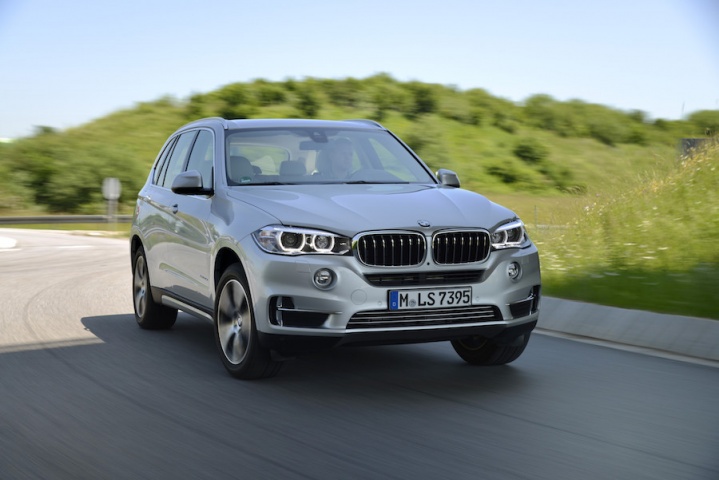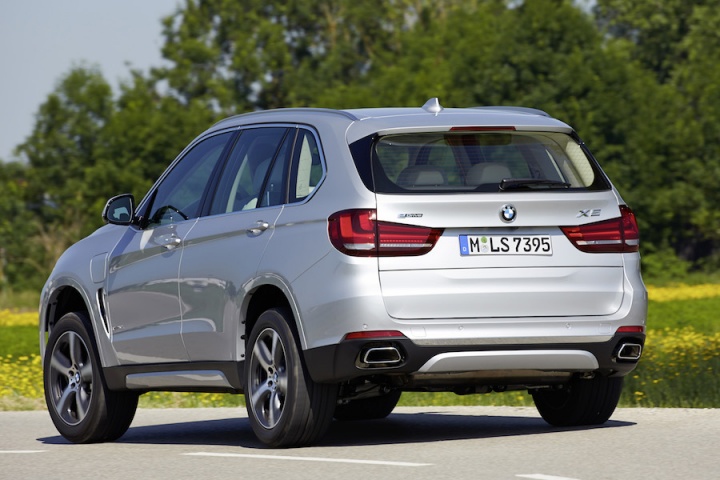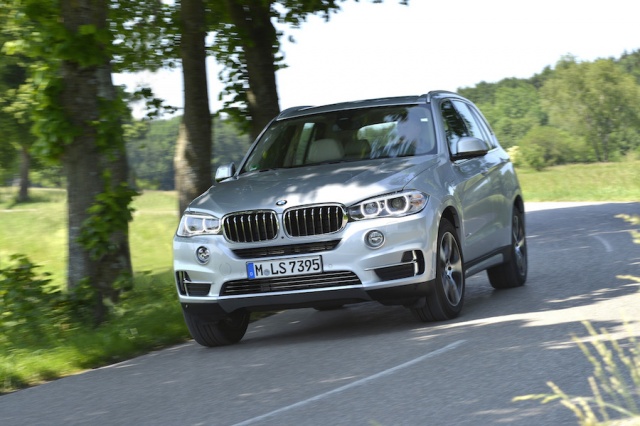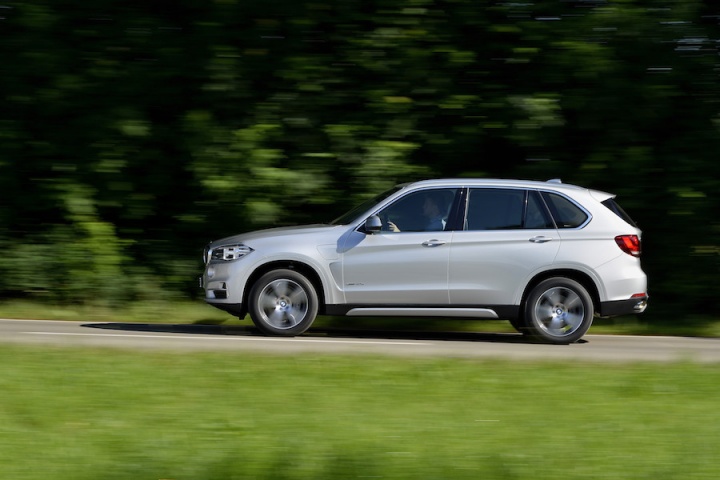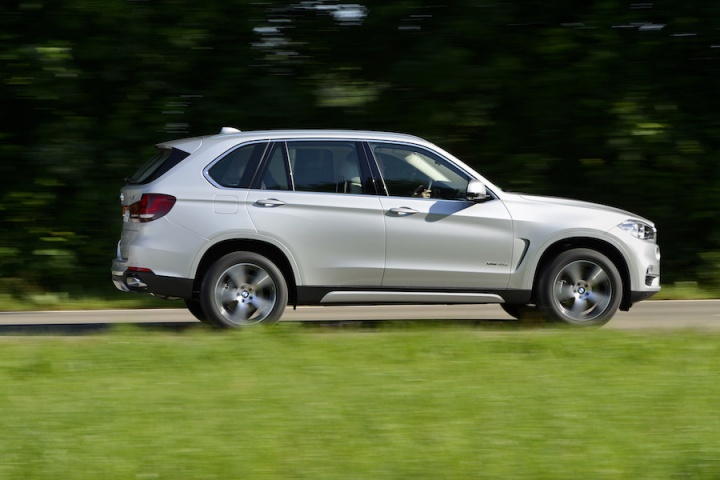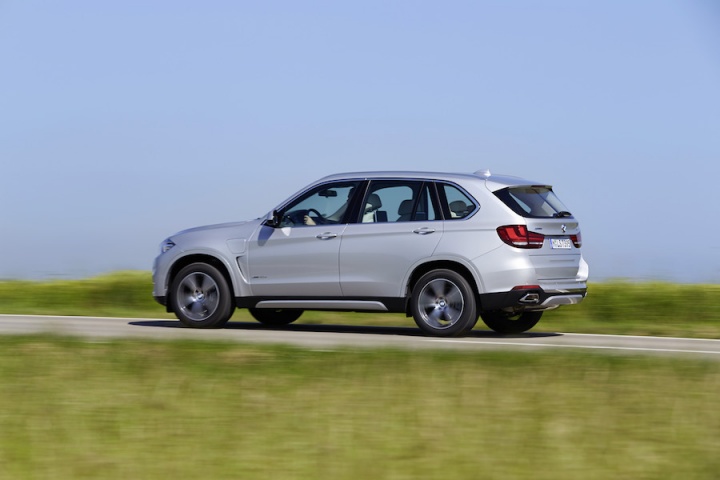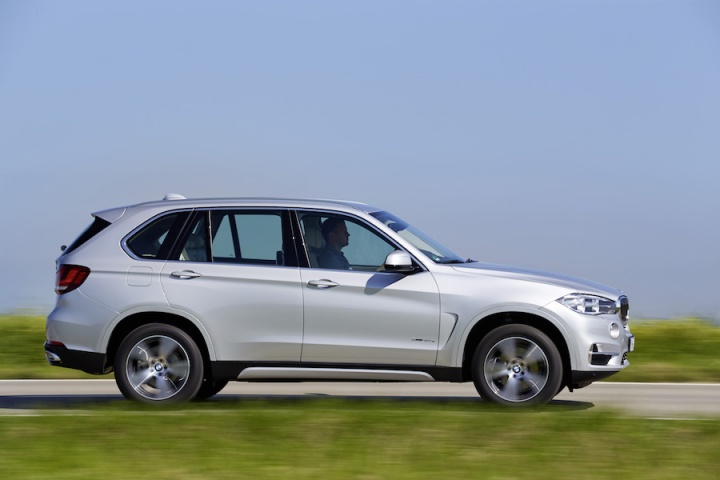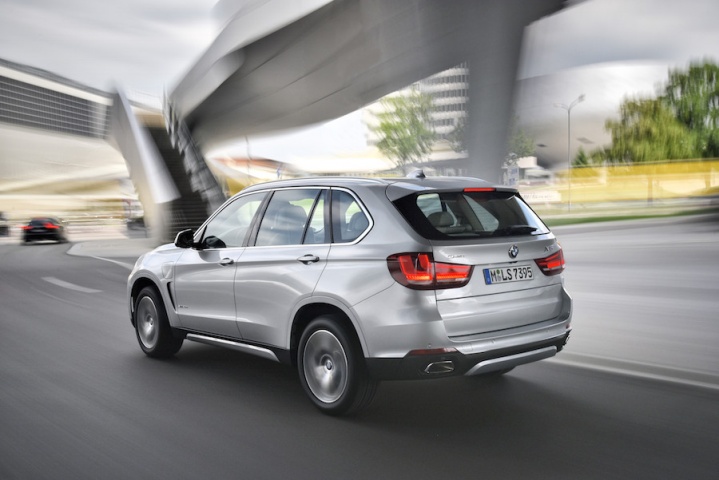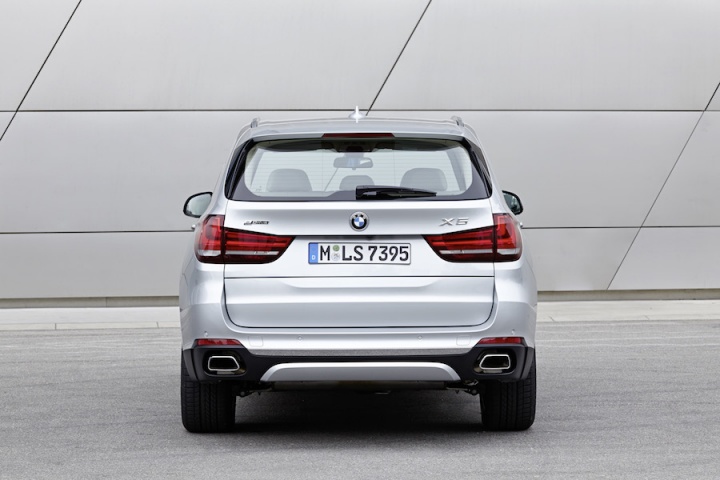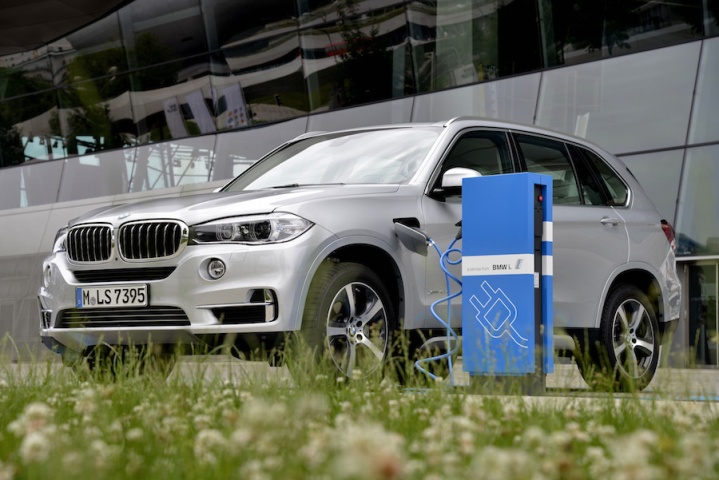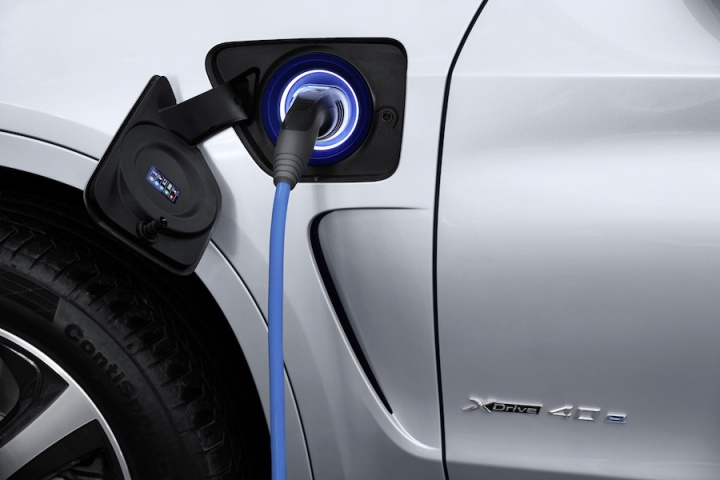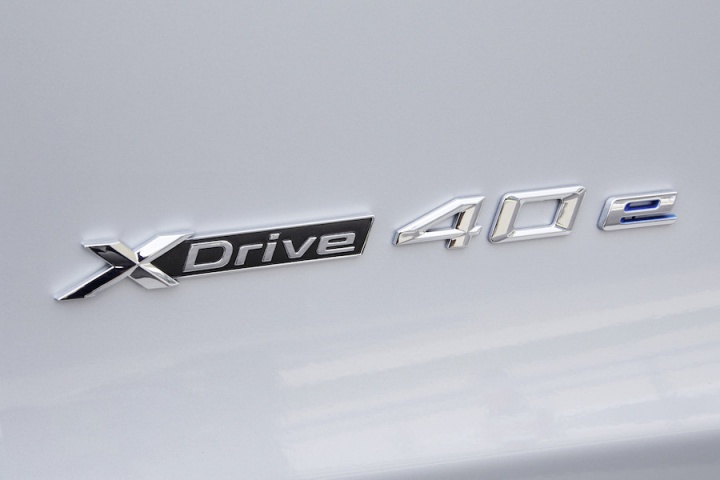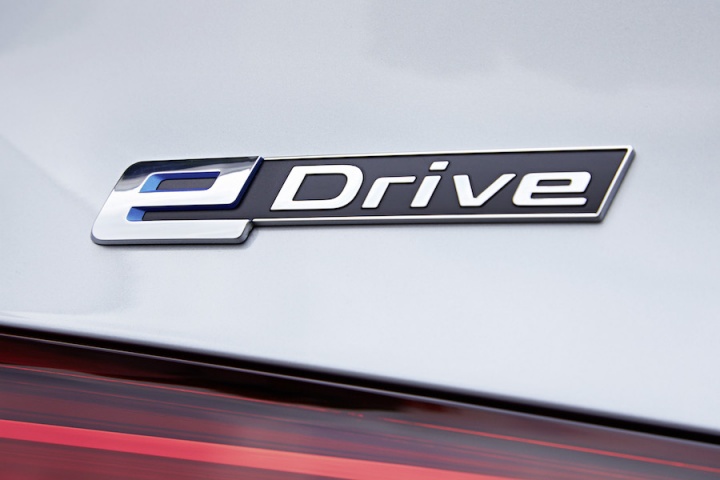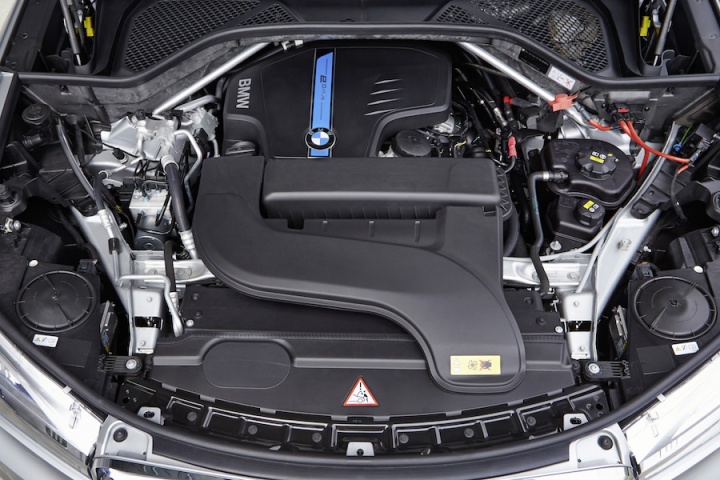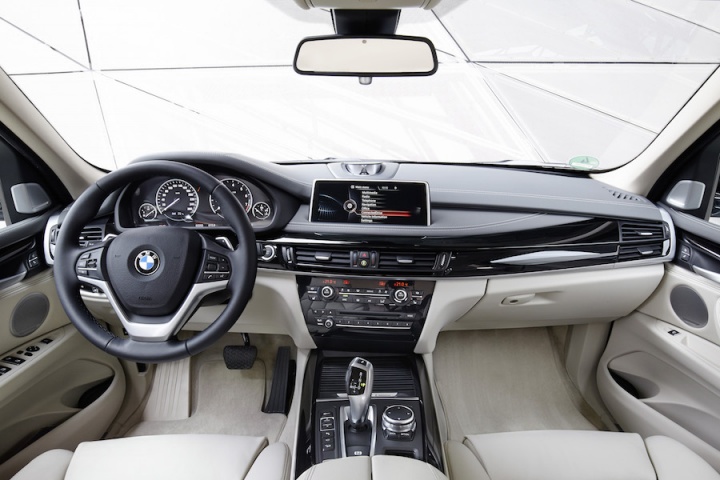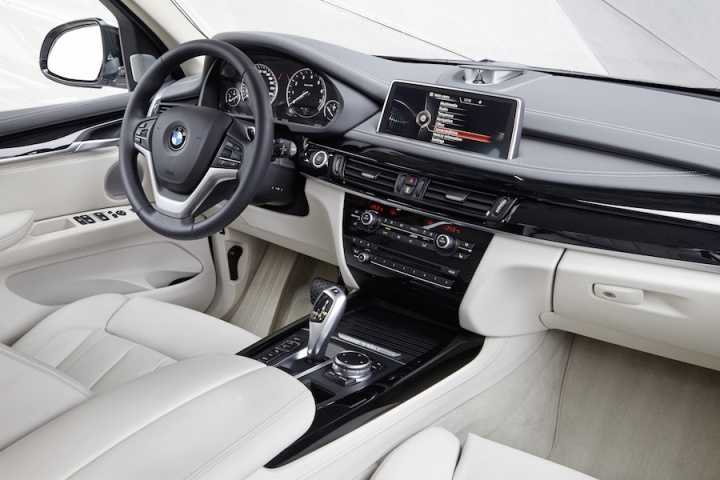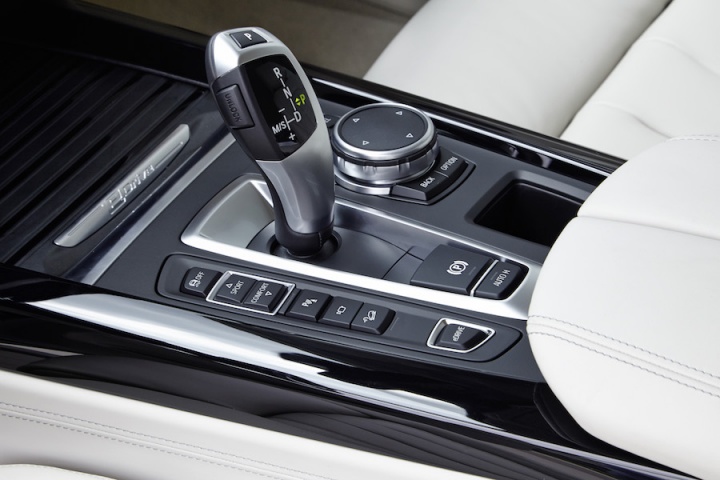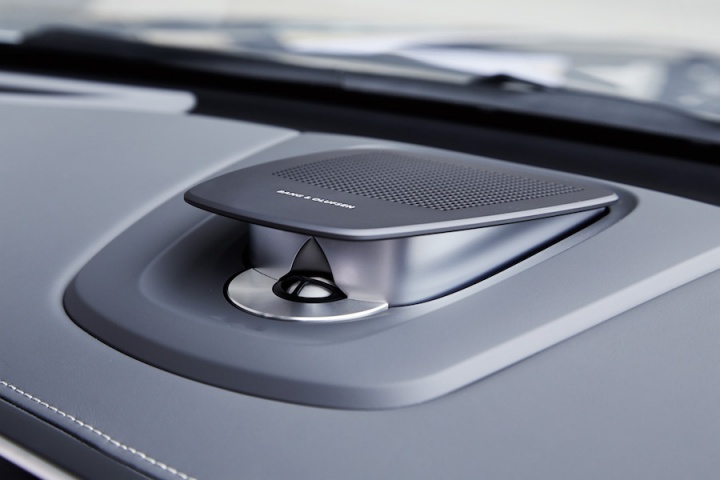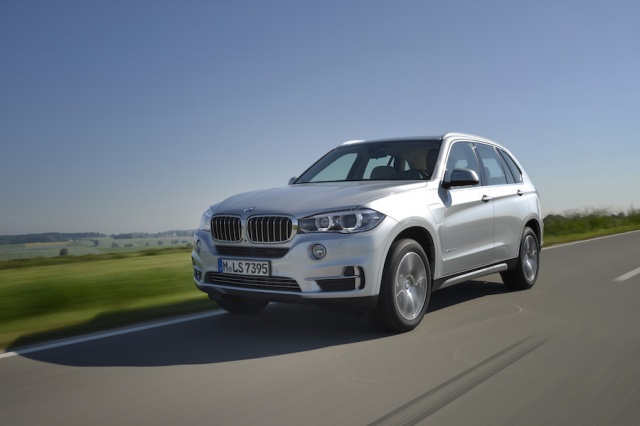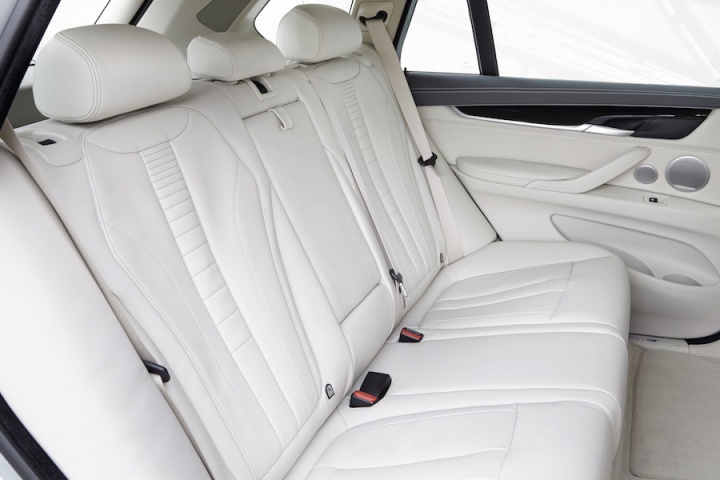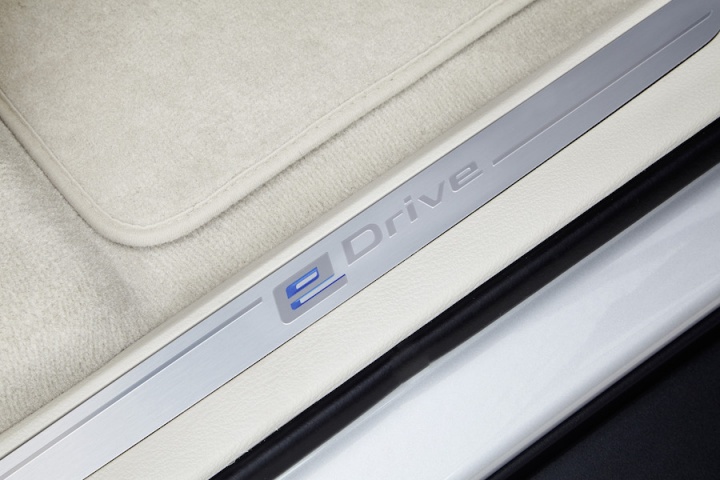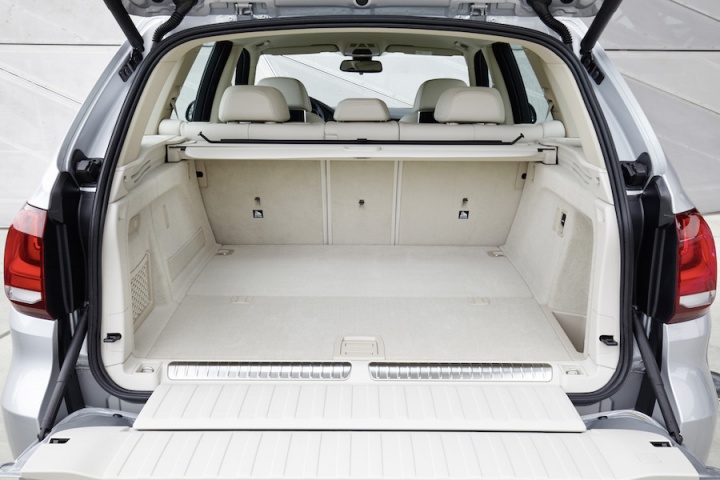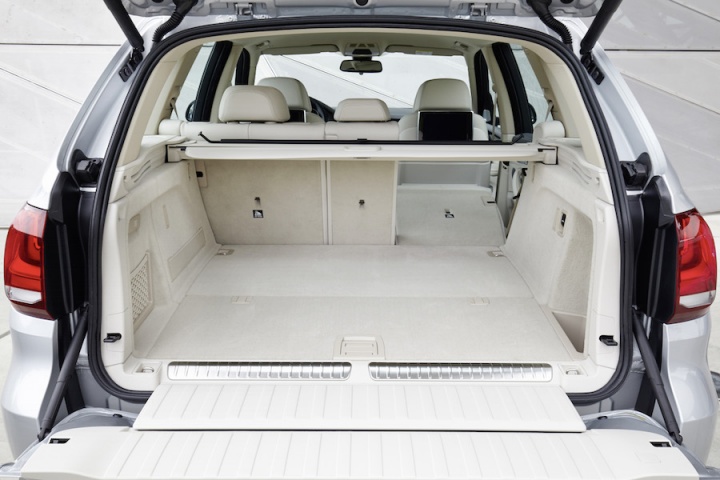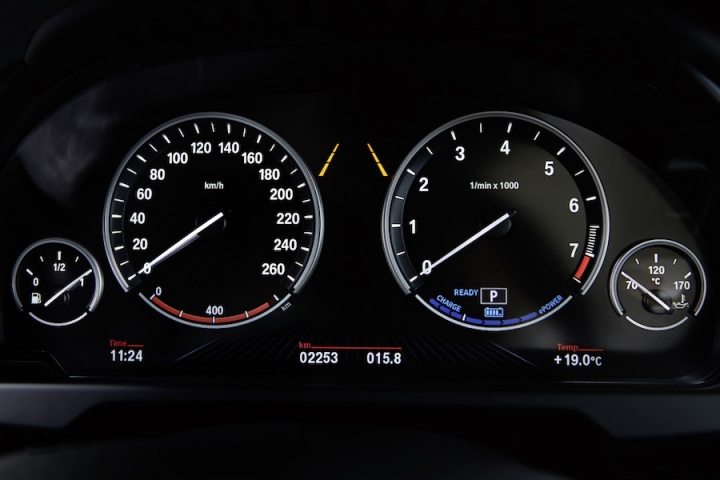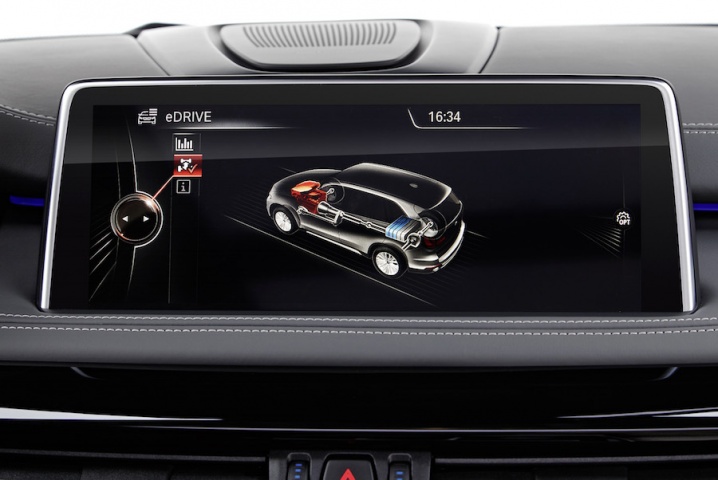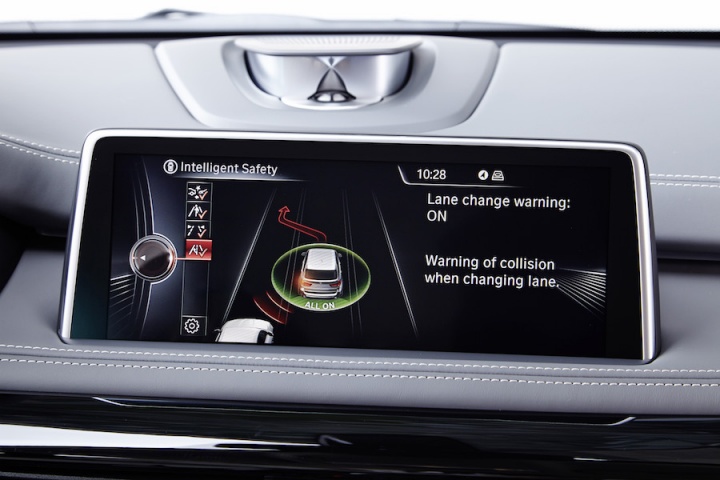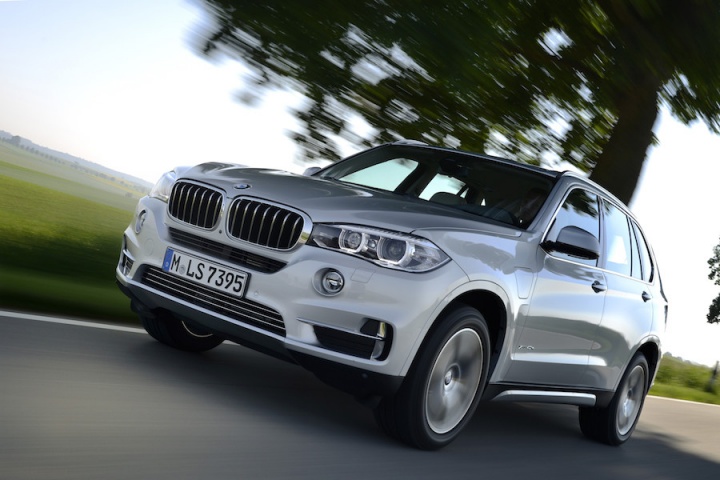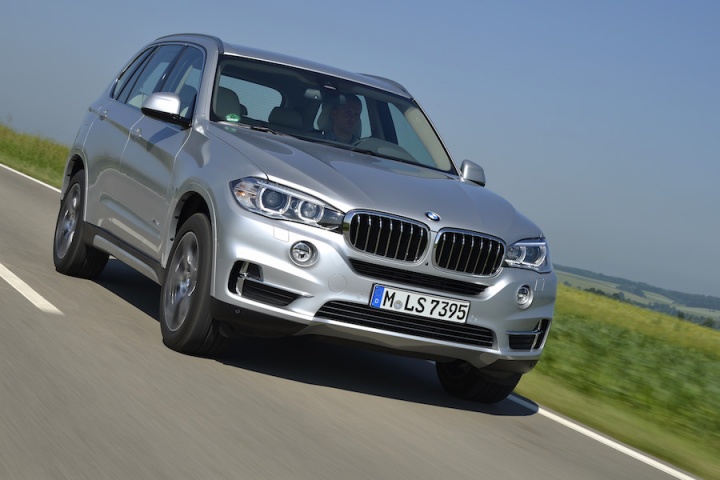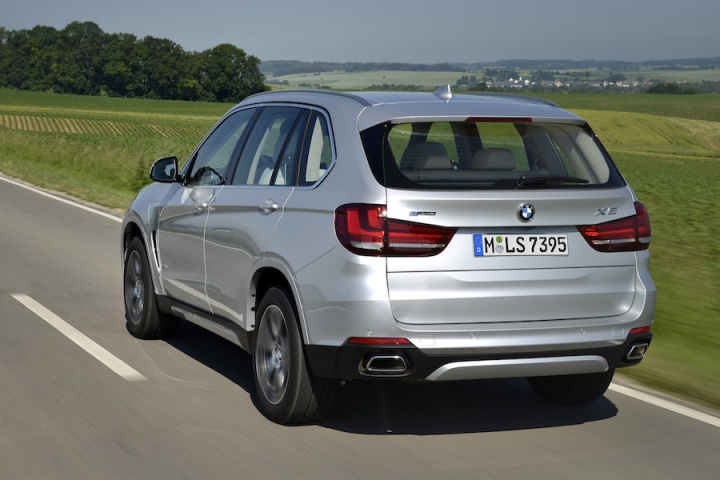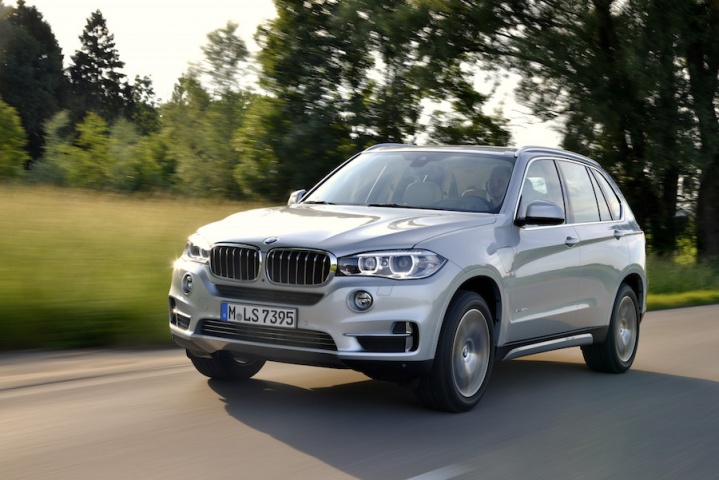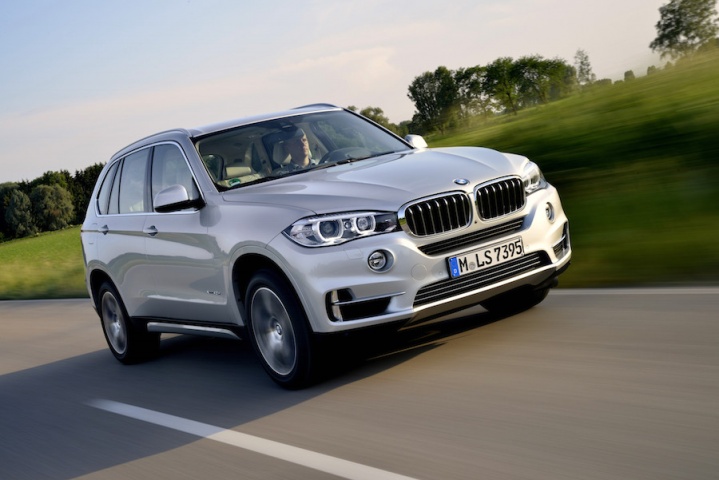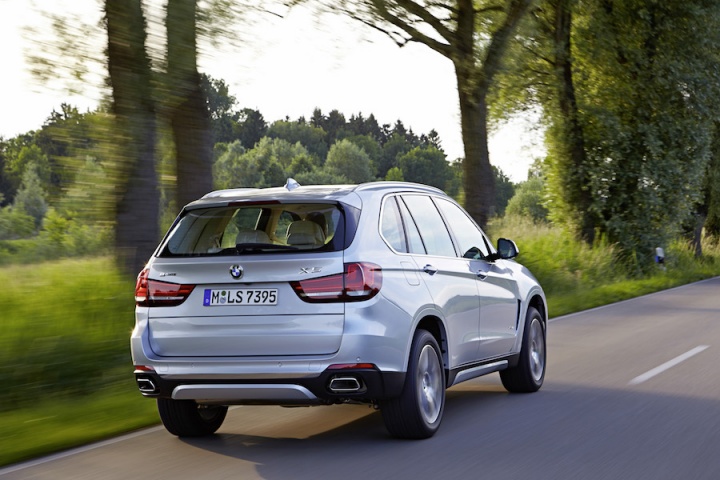Taking the tricks learned from its i models and feeding them back into its 'core brand' range, BMW has revealed its first series production plug-in hybrid: the X5 xDrive40e. This is one established vehicle, the SUV, meeting the future propulsion tech that could supersede diesel and BMW, as with so many of its products, has done a cracking job of blending the two together. But the xDrive40e is not without its flaws...
In the Metal
The xDrive40e looks like any normal BMW X5, so big, chunky and reasonably attractive, if not that stylistically dissimilar from the second-generation example that appeared way back in 2006. There are some clues (and they are little) as to its potential planet-saving character, the most obvious being that second 'filler flap' on the front wing for the plug-in charging socket. It also gets trapezoidal exhaust tips, an 'eDrive' badge on its boot and the 'xDrive40e' inscription on the base of its front doors. Other than that, it's an X5; you'll have seen hundreds of them, so there are no surprises here.
Same goes for the interior. There are some hybrid specific displays in the iDrive and instrument cluster that you won't see in a regular X5, while around the midriff of the cabin is an illuminated blue line to visually reinforce the hybrid nature of the car you're driving. The biggest single giveaway is the new eDrive button sitting on the transmission tunnel. The X5 has a lovely, sumptuous cabin with loads of space and an impeccable standard of fit and finish, so this one feels luxurious within.
Driving it
BMW is using its 2.0-litre turbocharged four-cylinder petrol engine up front, allied to an eight-speed ZF automatic that houses the electric motor and sends drive to all four wheels; BMW calls this 'when xDrive meets eDrive', but were hoping there's no Meg Ryan 'faking it' scene to contend with too. Ahem. Anyway, expect to see this combination (the hybrid drivetrain, not Billy Crystal and... oh, forget it!) in many more BMWs soon, as the X5 is at the forefront of a Munich PHEV phalanx that will include the 340e and 740e models already confirmed for 2016.
Dealing with the numbers en masse, this 2.3-tonne machine makes peak outputs of 313hp and 450Nm, allowing both reasonable pace (a 0-100km/h time of 6.8 seconds and a 210km/h limited top speed) and sensational eco claims - depending on which size wheels you specify, the xDrive40e can hit 3.3 litres/100km (85.6mpg) and emit just 77g/km of carbon dioxide. Remarkable. In full electric mode, it is limited to 120km/h and a range of 31km, the battery capable of a full 230-volt socket recharge in around three hours.
Ah yes, modes. As well as the Driving Experience Control switch found in many a conventional BMW - incorporating Sport, Comfort and Eco Pro choices - that new eDrive button also has three settings in its roster: Auto eDrive, Max eDrive and Save. The first of these is hybrid running, the car using either of the two motors or both of them together, depending on driving demands and battery charge. The second is the full electric mode for urban commutes and the last either maintains the battery at or charges it up to 50 per cent of its capability, using the petrol motor and brake recuperation as generators. Sounds complex, but in reality it works seamlessly and the X5 xDrive40e is no more challenging to drive than a diesel variant. Indeed, the satnav is so clever that once you select a destination, unless you press the eDrive button to override it, the car will automatically cycle through the best eDrive modes according to whether you're in a town, on a country road or thundering along a motorway.
In electric mode, the motor has no trouble shifting the bulky X5 off the line, pick up being suitably swift and silent. And in hybrid running, the petrol engine is switched on and off again in a way that is utterly seamless - it's such a quiet unit, unless revved beyond 4,500rpm, that it's eerie to note the needle swinging wildly round the rev counter as the 2.0 powers up and cuts out with the utmost discretion. If we're picking the nits, with full battery and the engine stoked up, the X5 never feels neck-wrenchingly rapid when you floor it; it's quick enough but not as fast as the numbers suggest it will be.
And this leads us on to another few issues. While the road-holding of the X5 seems unaffected by the hybrid additions, it being as leech-like and composed as ever, the ride comfort is not great. Too often, minor surface imperfections are detectable through the base of the seat, even on largely smooth German roads. There are also occasions where large compressions immediately result in a feeling of body float in the rebound phase, something we think will only be more noticeable on Irish routes. And while the engine and wind noise are suppressed, the tyres on the xDrive40e made a curious, high-pitched noise for the majority of our time behind the wheel. None of these are fatal problems but a Volvo XC90 PHEV performs to a higher standard in all these areas.
The bigger problem is one that's not BMW's doing, but a result of the unrealistic madness of the NEDC fuel consumption test. Because NEDC currently takes no account of zero-emissions running, it means the quoted economy and emissions figures that the car company has to publicise are hugely inflated over what you'll get in reality, as the PHEV skews the final numbers due to the fact it spends part of the test cycle not using any fuel at all. Therefore, unless you live and drive exclusively in a city and have regular access to charging points - thus meaning you can run it in electric mode for the majority of the time - you will have no hope of getting near 3.3 litres/100km; so don't be disappointed with more like 8.8 litres/100km (32.1mpg), which is what we saw on a mixed Autobahn, country road and urban driving route of 150km. And we didn't exactly thrash the X5 mercilessly, either, although we will concede it was a sopping wet, cold day in Bavaria, so the BMW had its wipers, lights, heating system and satnav all draining the battery. Still, these real-world economy figures are not ones to get diesel owners running to showrooms to chop their cars in for a hybrid.
What you get for your Money
It's well-equipped as standard and can be specified with all the cost options that a normal X5 could be, save for one - and it's probably the most crucial one of all. Due to the placement of the lithium-ion battery under the boot floor, the xDrive40e can only be had in five-seat configuration. That puts it at a serious disadvantage compared to the Volvo XC90 T8 Twin Engine, a car designed to take electrification from the off and which comes with a full complement of seven chairs. The X5 PHEV has self-levelling air rear suspension to cope with the extra weight in the rear, if tech will sate you instead of carrying capacity.
Summary
Like so many BMW creations, the xDrive40e is a brilliant piece of engineering and the drivetrain is without fault in terms of the smoothness of its operation; the majority of the dynamic set-up is absolutely fine, too. The PHEV's main issues come from a likely high list price, the lack of a seven-seat option, a ride that's not the plushest in the world and real-world fuel economy that's a long way shy of the official figures. If you're determined to have a big hybrid SUV, we'd say the smart money would go into a Volvo XC90 T8 instead.

